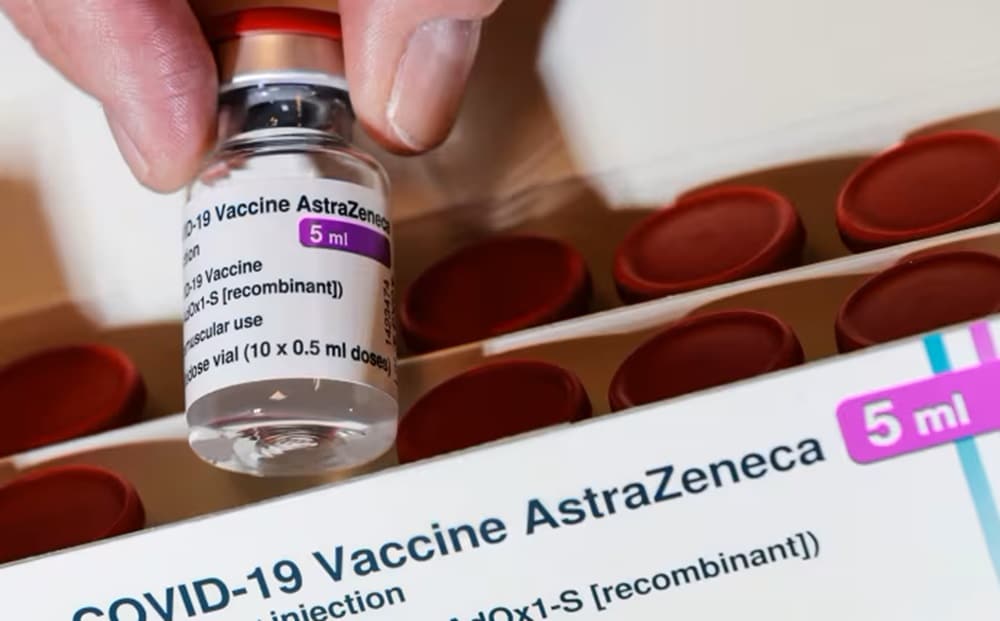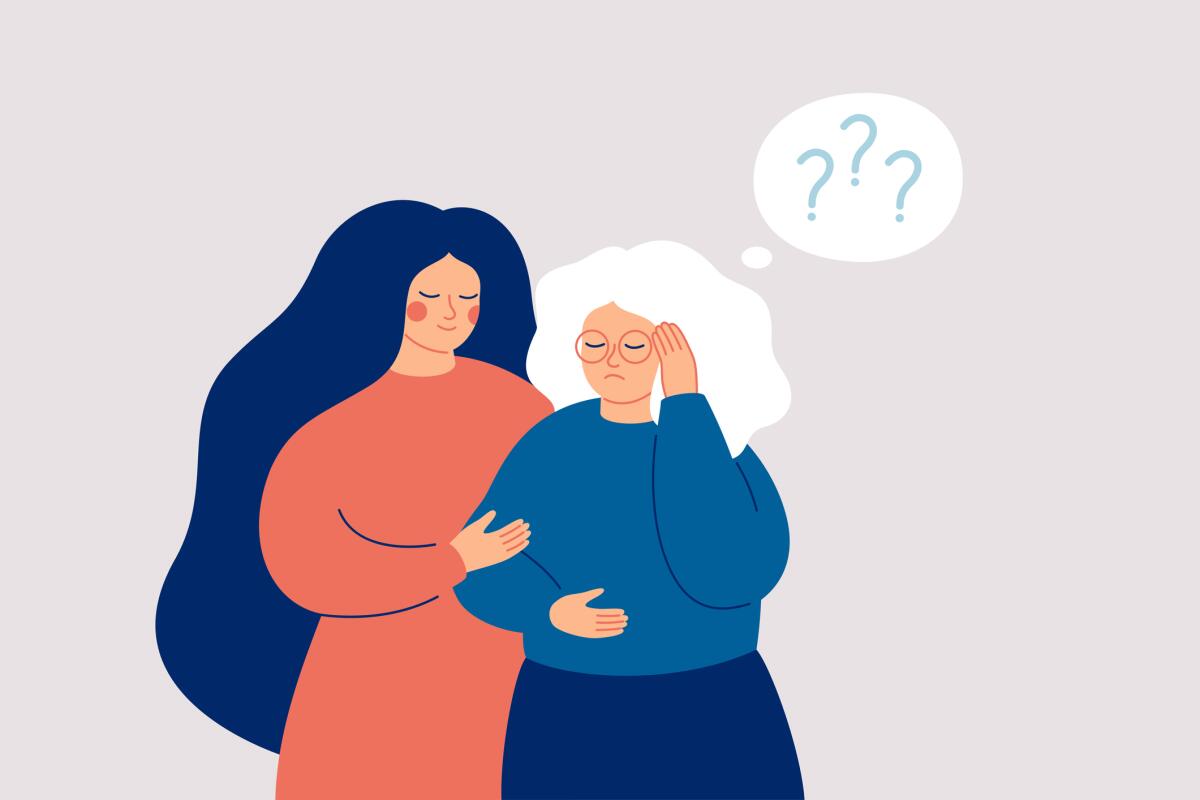Health
Thousands Of US Health Care Workers Go On Strike In Multiple States Over Wages And Staff Shortages

LOS ANGELES Approximately 75,000 Kaiser Permanente employees left their jobs in multiple states on Wednesday, launching a significant healthcare strike amid an extraordinary year for labor organizing and work stoppages in the United States.
With 39 hospitals nationwide, Kaiser Permanente is one of the country’s largest insurers and health care system administrators. Nearly 13 million people are covered by the Oakland, California-based nonprofit, which sends them to clinics and hospitals it operates or contracts with to provide care.
The Coalition of Kaiser Permanente Unions, which represents approximately 85,000 health system employees nationwide, asserts that understaffing is detrimental to patient care. Members approved a three-day strike in California, Colorado, Oregon, and Washington and a one-day strike in Virginia and the District of Columbia.
Workers applauded as the strike deadline approached in the predawn hours outside the Kaiser Permanente Los Angeles Medical Centre. Licensed vocational nurses, home health assistants, ultrasound sonographers, and radiology, X-ray, surgical, pharmacy, and emergency department technicians are among the striking workers.
Thousands Of US Health Care Workers Go On Strike In Multiple States Over Wages And Staff Shortages
Culinary Union members, including Veronica Flores Serrano, who works at The Linq, vote in a strike vote on the UNLV campus Thomas & Mack Centre on Tuesday, September 26, 2023. Tens of thousands of hospitality employees who maintain Las Vegas’s iconic casinos and hotels were scheduled to vote Tuesday on whether or not to authorize a strike amid ongoing contract negotiations.
The strike of autoworkers expanded to 38 locations in 20 states. Biden planned a visit to demonstrate support.
Brittany Everidge, a ward clerk transcriber in the medical center’s maternal child health department, said short-staffing in her position means pregnant people in active labor may be trapped in a waiting room for hours before they can get checked in. Occasionally, more transcribers can be needed to create and update records for newborns.
During a phone interview from the picket line, she stated, “We never want to be in a position where the nurses must perform our duties.”
Kaiser says its hospitals, including emergency rooms, will remain open during the picketing, which does not involve doctors. The company announced it would hire thousands of temporary workers to cover vacancies caused by the strike. However, the strike may cause delays in scheduling appointments and rescheduling non-urgent procedures.
It occurs in a year when multiple industries, including transportation, entertainment, and hospitality, have experienced work stoppages.
Thousands Of US Health Care Workers Go On Strike In Multiple States Over Wages And Staff Shortages
The COVID-19 pandemic has significantly exacerbated the problems caused by burnout and excessive workloads in the healthcare industry, which have been the source of multiple strikes this year.
In August, unions representing Kaiser employees requested an hourly minimum wage of $25 and annual increases of 7% for the first two years and 6.25% for the following two years.
They claim that understaffing boosts the hospital system’s profits but harms patients and that executives have negotiated poorly.
Mikki Fletchall, a licensed vocational nurse at a Kaiser medical office in Camarillo, California, stated, “They’re not listening to the frontline healthcare workers.” “We are on strike due to our patients. We wish we didn’t have to do it, but we will.”
Next year, Kaiser has proposed hourly minimum compensation between $21 and $23, depending on location.
The hospital system has hired 51,000 employees since 2022 and plans to add 10,000 more by the end of the month.
Kaiser Permanente reported a second-quarter net income of $2.1 billion on more than $25 billion in operating revenue. However, the company reported that it was still facing cost headwinds, inflationary pressures, and labor shortages.
Michelle Gaskill-Hames, a senior executive at Kaiser, defended the company by asserting that its practices, compensation and retention are superior to those of its competitors, even though the entire industry confronts the same challenges.
President of Kaiser Foundation Health Plan and Hospitals of Southern California and Hawaii, Gaskill-Hames, stated, “Our focus for the dollars that we bring in is to keep them invested in value-based care.”
Thousands Of US Health Care Workers Go On Strike In Multiple States Over Wages And Staff Shortages
Despite the pandemic, she added that Kaiser only confronts a 7% turnover rate compared to the industry average of 21%.
“I believe that as a result of the pandemic, healthcare workers are completely exhausted,” she said. It was challenging to experience the trauma of caring for many COVID patients and dying patients.
The last labor agreement was negotiated in 2019, before the pandemic.
Hospitals generally have struggled in recent years with high labor costs, staffing shortages and rising levels of uncompensated care, according to Rick Gundling, a senior vice president with the Healthcare Financial Management Association, a nonprofit that works with healthcare finance executives.
Gundling noted that most of their revenue comes from government-funded programs such as Medicare and Medicaid. He says revenue growth is “only possible by increasing volumes, which is difficult under the best of circumstances.”
Since the end of the pandemic, workers requesting higher wages, improved working conditions, and job security have been increasingly inclined to walk off the job in response to employers’ increased need for labor.
The California legislature has sent Democratic Governor Gavin Newsom a bill that, over the next decade, would raise the minimum wage for the state’s 455,000 healthcare workers to $25 per hour. The governor has until October 14 to sign or veto the bill.
SOURCE – (AP)
Health
How to Use Lemon Juice for Dark Spots | WellHealthOrganic.com

Welcome to Wellhealthorganic.com, your go-to place for natural skincare products, including effective treatments.Wellhealthorganic easily-remove-dark-spots-lemon-juice. Are you tired of dealing with obstinate black spots on your skin? Look no further!
In this complete guide, we’ll look at how to effortlessly remove dark stains with the power of lemon juice. Say goodbye to uneven skin tone, and welcome to a more vibrant complexion!
Wellhealthorganic.com/Easily-Remove-Dark-Spots-Lemon-Juice
To maximize the benefits of lemon juice for dark spot removal, begin by making a simple but effective mixture for wellhealthorganic.com/easily-remove-dark-spots-lemon-juice. To avoid irritation, squeeze fresh lemon juice into a dish and dilute with equal parts water.
Application Technique
Use a cotton ball or pad to gently apply the lemon juice mixture to the afflicted regions of your skin. Avoid contact with your eyes and open wounds. Let the mixture stay on your skin for 10-15 minutes before washing with lukewarm water.
The frequency of use
Add this lemon juice treatment to your skincare routine 2-3 times a week for best results. Consistency is essential for progressively erasing dark spots and creating a more even complexion.
Lemon juice has natural bleaching properties.
Lemon juice contains citric acid, a natural bleaching agent that helps lighten dark spots and hyperpigmentation (source: wellhealthorganic.com/easily-remove-dark-spots-lemon-juice). Regular application can help to reduce the appearance of blemishes and produce a more even skin tone.
High Vitamin C content.
Lemon juice is high in vitamin C and helps to brighten the skin by stimulating collagen formation, minimizing the appearance of fine lines and wrinkles. Vitamin C also has antioxidant capabilities, which protect the skin from free radical damage and environmental stresses.
Antioxidant Effects:
In addition to vitamin C, lemon juice includes additional antioxidants that aid in the fight against oxidative stress and support skin health. These antioxidants work together to eliminate free radicals and create a healthy, glowing complexion.
Additional Ingredients for Increased Effectiveness
Turmeric
Turmeric is known for its anti-inflammatory effects, which can help lessen the redness and irritation linked with acne and black spots. Combine turmeric and lemon juice for a strong skin-whitening therapy.
Apple Cider Vinegar
Apple cider vinegar is another natural treatment that can help regulate skin pH and encourage cellular turnover. Combine it with lemon juice to create a potent dark spot treatment that exfoliates and rejuvenates the skin.
To use lemon juice safely, avoid sun exposure.
After applying lemon juice to your skin, you should avoid lengthy sun exposure. Lemon juice can make your skin more susceptible to sunlight, raising the risk of sunburn and other skin damage. When you walk outside, apply high-SPF sunscreen to protect your skin.
Perform a patch test.
Before applying lemon juice to your face or other sensitive regions, perform a patch test to check for any unwanted effects. Apply a little amount of diluted lemon juice to a discreet region of your skin and wait 24 hours to observe if it causes irritation or allergic responses.
Potential side effects and precautions include skin irritation.
Some people, particularly those with sensitive skin, may notice skin irritation or redness after using lemon juice. If you have any unpleasant reactions, stop using the product immediately and rinse your skin with cool water.
Gastrointestinal discomfort
While lemon juice is safe for topical application, ingesting large amounts may induce stomach distress in some people. To avoid stomach difficulties, lemon juice should be diluted with water or consumed in moderation.
Consult a dermatologist for expert insights and recommendations.
If you have chronic dark spots or skin issues, you should see a dermatologist for specialized advice and treatment options. A dermatologist can analyze your skin condition and prescribe the best course of action based on your needs.
Maintain a consistent skincare routine.
Consistent skincare is crucial for keeping healthy, bright skin. Lemon juice can be utilized for dark spot removal. Cleanse your skin twice daily, exfoliate periodically, and moisturize to keep it hydrated and nourished.
Conclusion
To summarize, wellhealthorganic.com/easily-remove-dark-spots-lemon-juice provides a comprehensive method for treating dark spots and obtaining bright skin. By utilizing the power of natural components such as lemon juice, individuals can say goodbye to uneven skin tone and welcome a more radiant complexion. Explore the steps in this book to begin your road to healthier, beautiful skin.
U.K News
AstraZeneca Removes Covid-19 Vaccine from the UK Market

AstraZeneca is pulling its Covid-19 vaccine from the UK market less than four years after its debut, citing a “surplus” of vaccines targeting newer strains and declining demand.
On Wednesday, AstraZeneca stated that while it was “proud of the role Vaxzevria played in ending the global pandemic,” the company would no longer manufacture or supply the medicine due to a “surplus of available updated vaccines.”
The decision marks the end of the road for the vaccine, which was developed in partnership with experts at Oxford University within months of the pandemic’s breakout. It was authorized in the UK in late 2020, and over 3 billion doses have been distributed since its debut.
Unlike rivals Pfizer, BioNTech, and Moderna, AstraZeneca initially used a non-profit approach for its vaccine, selling it “at cost” as part of an agreement with Oxford. The medication was critical in ending the epidemic. However, its deployment was marred by rare cases of blood clotting and disagreements with the European Union over access to medicine.
“According to independent estimates, over 6.5 million lives were saved in the first year of use alone,” AstraZeneca stated, adding that additional COVID-19 vaccines have since been produced, reducing sales of its own medicine.
First Vaccine Approved in the UK
The announcement comes after the pharmaceutical company sought in March that the European Union withdraw its marketing authorization for Vaxzevria, which was granted on Tuesday.
AstraZeneca’s vaccine has been supplanted by mRNA-based vaccines produced by BioNTech/Pfizer and Moderna, which are now the most widely used worldwide.
According to the company’s full-year figures, AstraZeneca’s jab generated only $12 million in sales in 2023, compared to nearly $4 billion in 2021. In late 2021, AstraZeneca signed its first for-profit arrangements, claiming the pandemic had entered an “endemic phase.”
The vaccine was approved in the United Kingdom in December 2020 and the European Union in January 2021, but it was never approved in the United States, where authorities criticized the company’s presentation of data on vaccination efficacy.
Overall, the vaccination was safe and effective, but confidence in it dipped in 2021 following a string of rare blood-clotting occurrences, prompting European authorities to restrict its use among younger people.
Jamie Scott is suing the firm, alleging that taking the vaccine caused him to develop a major blood clot. If held accountable, the UK government’s vaccine damage payment plan would compensate for any damages. The business stated that the removal was unrelated to the uncommon blood clotting incidences.
AstraZeneca stated: “We will now work with regulators and our partners to align on a clear path forward to conclude this chapter and significant contribution to the Covid-19 pandemic.”
About AstraZeneca
AstraZeneca is a global pharmaceutical corporation based in Cambridge, England. It develops and manufactures various medications to treat various medical ailments. During the COVID-19 epidemic, the business earned headlines for its collaborative efforts to create a vaccine with Oxford University.
Vaxzevria COVID-19 vaccine was one of the first vaccines approved for emergency use worldwide. Despite initial issues with efficacy data and worries about potential adverse effects, the vaccination proved successful in preventing severe illness and death from COVID-19. It was essential in vaccination campaigns throughout Europe and the rest of the world.
Their line of pharmaceuticals extends beyond the COVID-19 vaccine to include cancer, cardiology, respiratory, and metabolic illnesses. The corporation invests substantially in R&D, hoping to bring breakthrough therapies to market. It operates in over 100 countries and employs tens of thousands worldwide.
AstraZeneca has experienced numerous controversies and legal challenges, including litigation involving drug pricing and marketing activities. However, it remains a key player in the pharmaceutical sector, strongly emphasizing scientific research and global health programs. The company’s response to the COVID-19 epidemic has strengthened its position as a major contributor to global public health efforts.
Source: The Financial Times
Health
A Subset Of Alzheimer’s Cases May Be Caused By Two Copies Of A Single Gene, New Research Shows

Washington — For the first time, researchers have uncovered a genetic variant of Alzheimer’s disease among people who inherit two copies of a concerning gene.
Scientists have long known that a gene known as APOE4 is one of numerous factors that can increase people’s chance of developing Alzheimer’s disease, including just growing older. The great majority of Alzheimer’s cases develop after age 65. However, new research published on Monday reveals that for people who carry two copies of the gene, it is more than a risk factor; it is an underlying cause of the mind-robbing disease.
The findings have “profound implications,” according to Dr. Juan Fortea, who led the study at the Sant Pau Research Institute in Barcelona, Spain.
Symptoms can appear seven to ten years earlier than in other elderly people who get Alzheimer’s.
An estimated 15% of Alzheimer’s patients have two copies of APOE4, which means that those instances “can be tracked back to a cause, and the cause is in the genes,” according to Fortea. Until recently, hereditary variants of Alzheimer’s were thought to be the only types that struck at considerably younger ages, accounting for less than 1% of all cases.
According to scientists, the findings highlight the need of developing medicines targeting the APOE4 gene. Some doctors will not provide Leqembi, the only treatment found to modestly reduce the disease, to people with the gene pair because they are more likely to experience a dangerous side effect, according to Dr. Reisa Sperling, a study coauthor at Harvard-affiliated Brigham and Women’s Hospital in Boston.
Sperling is looking for ways to prevent or at least delay Alzheimer’s, and “this data for me says wow, what an important group to be able to go after before they become symptomatic.”
However, the revelation does not imply that people should race to get a DNA test. “It’s important not to scare everyone who has a family history” of Alzheimer’s because this gene combination isn’t responsible for the majority of instances, she told The Associated Press.

San deigo – VOR News Image
How Does Genetics Affect Alzheimer’s?
Alzheimer’s disease affects more than 6 million Americans and millions more throughout the world. A few genes are known to create rare “early-onset“ forms, which are mutations passed down through generations that cause symptoms to appear unusually early, before the age of fifty. Some occurrences have also been connected to Down syndrome.
However, Alzheimer’s disease most typically strikes after the age of 65, particularly in the late 1970s and 1980s, and the APOE gene, which also affects how the body manages lipids, has long been thought to have a role. There are three major variations. Most people have the APOE3 variation, which does not appear to raise or decrease Alzheimer’s risk. Some people carry APOE2, which offers some protection against Alzheimer’s.
APOE4 has long been identified as the most significant genetic risk factor for late-life Alzheimer’s, with two copies being more risky than one. Approximately 2% of the world’s population is predicted to inherit one copy from each parent.

Brain Space – VOR News Image
Research suggests a cause for a subset of Alzheimer’s.
To better comprehend the gene’s function, Fortea’s team analyzed data from 3,297 brains given for research and over 10,000 patients in Alzheimer’s studies in the United States and Europe. They investigated Alzheimer’s symptoms and early warning signs, such as sticky amyloid in the brain.
According to a study published in the journal Nature Medicine, people with two APOE4 copies accumulated more amyloid at age 55 than those with one copy or the “neutral“ APOE3 gene type. By age 65, brain scans revealed considerable plaque buildup in nearly three-quarters of those double carriers, who were also more likely to develop Alzheimer’s symptoms at that age rather than in their 70s or 80s.
Fortea stated that the disease’s basic biology was comparable to young inherited kinds.
It appears to be “a familial form of Alzheimer’s,“ according to Dr. Eliezer Masliah of the National Institute on Aging. “It is not just a risk factor.”
Importantly, not everyone with two APOE4 genes develops Alzheimer’s symptoms, and researchers need to figure out why, Sperling said.
“It’s not quite destiny,“ she explained.

NPR – VOR News Image
How the new findings may affect Alzheimer’s research and treatment
The medicine Leqembi works by removing some sticky amyloid, but Sperling said it’s unclear whether carriers of two APOE4 genes benefit because they are at a higher risk of the drug’s side effects, which include hazardous brain swelling and hemorrhage. One research topic is whether they might benefit from starting such medications sooner than others.
Masliah stated that other study tries to produce gene therapies or medications that precisely target APOE4. He believes it is especially critical to study APOE4’s impact across varied communities, as it has been investigated primarily in white people of European heritage.
Gene tests are now solely used to determine whether someone is a candidate for Leqembi or to enroll in Alzheimer’s research, particularly investigations of potential disease prevention methods. According to Sperling, the persons who are most likely to carry two APOE4 genes have parents who both developed Alzheimer’s disease in their 60s rather than 80s.
SOURCE – (AP)
-
Sports5 months ago
Saints’ Aggressive Play-Calling Ends Up Coming Back To Hurt Them In Loss To Rams
-
Business5 months ago
Nike Says It Will Cut $2 Billion In Costs In A Major Warning For Consumers
-
Business5 months ago
Federal Court Revives Lawsuit Against Nirvana Over 1991 ‘Nevermind’ Naked Baby Album Cover
-
News5 months ago
The Rise of Woke Ideology in Western Culture
-
Business5 months ago
Wayfair CEO: Employees Need To Work Longer Hours, After Laying Off 5% Off The Company
-
Sports5 months ago
StreamEast Live Sports Streaming: The Ultimate Guide













































